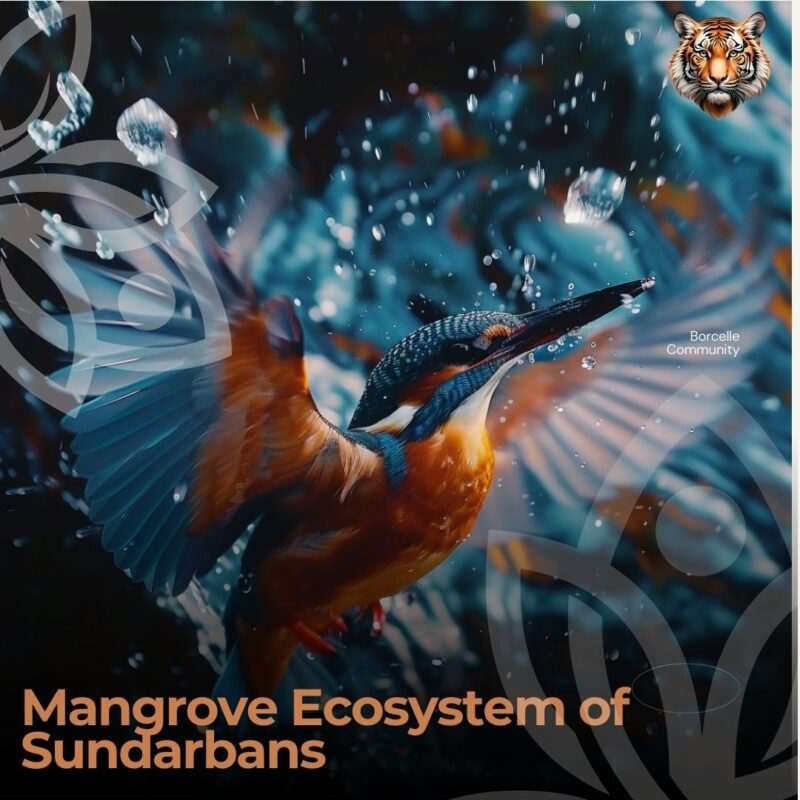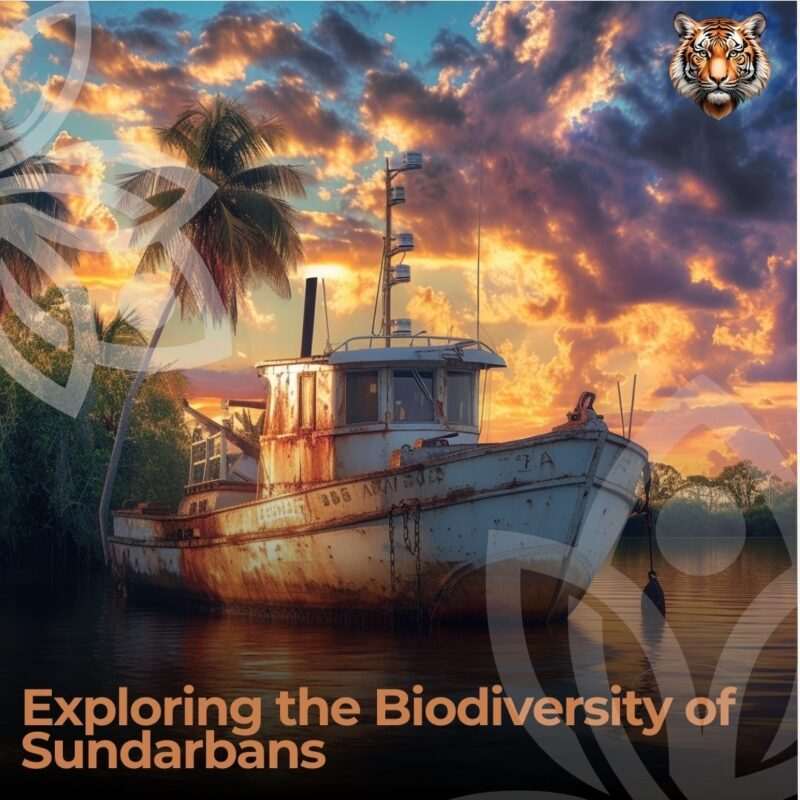- 1 Day Sundarban Tour
Pricing:
- ₹2799 per adult
- ₹1399 for children aged 4-8 years
- Free for children aged 1-4 years (under 48 months)
Facilities Included:
- Welcome Drink:
- Transportation: [Pick + Drop]
- Breakfast:
- Boat Safari:
- Lunch:
- Sightseeing:
- Guide Assistance:
- Snacks and Tea:
- Safety Measures:
- 1 Night 2 Days Sundarban Tour
Pricing:
- ₹4500 per adult (Non-AC room)
- ₹5000 per adult (AC room)
- ₹2250 for children aged 4-8 years
- Free for children aged 1-4 years (under 48 months)
Facilities Included:
- Welcome Drink
- Meals: All Times
- Boat Safari
- Accommodation: AC/ Non Ac
- Cultural Program:
- Visit Watchtowers and Local Attractions
- Safety
- Guided Tour
- Tea/Coffee Breaks
- 2 Night 3 Days Sundarban Tour
Pricing:
- ₹5500 per adult (Non-AC room)
- ₹6500 per adult (AC room)
- ₹2750 for children aged 4-8 years
- Free for children aged 1-4 years (under 48 months)
Facilities Included:
- Welcome Drink
- Meals: (breakfast, lunch, evening snacks, and dinner)
- Extended Boat Safaris: Multiple guided boat safaris
- Accommodation: in AC or non-AC rooms,
- Cultural Program:
- Visits to Key Attractions:
- Expert Guide:
- Tea/Coffee Breaks:

Sundarban 3 Days 2 Nights Package
Immerse in the wild beauty of Sundarbans with our 3 Days, 2 Nights adventure!

Book Sundarban 3 Days 2 Nights
Immerse in the wild beauty of Sundarbans with our 3 Days, 2 Nights adventure!
- 2 Night 3 Days Sundarban Boat Tour
Pricing:
- ₹5500 per adult (Non-AC room)
- ₹6500 per adult (AC room)
- ₹2750 for children aged 4-8 years
- Free for children aged 1-4 years (under 48 months)
Facilities Included:
- All Meals:
- Guided Boat Safaris:
- 2-Night Accommodation: Stay on the boat in comfortable AC or non-AC rooms.
- Cultural Performances:
- Attractions:
- Safety & Security:

Boat Sundarban 3 Days 2 Nights Package
Sail into the wild with our 3 Days, 2 Nights Sundarban Boat Adventure!

Sundarban 3 Days 2 Nights Package
Explore the untamed beauty of Sundarbans with a thrilling 3 Days, 2 Nights boat tour!
A Deep Dive into the Mangrove Ecosystem of Sundarbans

Mangrove Ecosystem of Sundarbans: The Sundarbans, located at the delta of the Ganges, Brahmaputra, and Meghna rivers, is the largest contiguous mangrove forest in the world. Spanning both India and Bangladesh, this UNESCO World Heritage Site is not just famous for its Royal Bengal Tigers but also for its intricate mangrove ecosystem. The Sundarbans, with its unique blend of salt-tolerant trees, tidal rivers, and a complex web of species interactions, represents one of the most productive and biodiverse ecosystems on Earth. Also, you can Book the Sundarban Tour At Royal Sundarban Tourism and Sundarban Leisure Tourism Powered By Argusdna. Let’s dive deeper into Mangrove Ecosystem of Sundarbans.

Deep Dive into the Mangrove Ecosystem of Sundarbans
1. Mangroves: The Foundation of the Ecosystem
The term “mangrove” refers to a variety of salt-tolerant trees and shrubs that thrive in coastal intertidal zones. In the Sundarbans, the most common species are Sundari (Heritiera fomes) and Gewa (Excoecaria agallocha). These plants have evolved to survive in an environment characterized by daily tidal inundation and saline waters. Mangroves are uniquely adapted with specialized root systems, including aerial roots, which allow them to take in oxygen from the air when submerged during high tide. We can explore further details regarding Mangrove Ecosystem of Sundarbans.
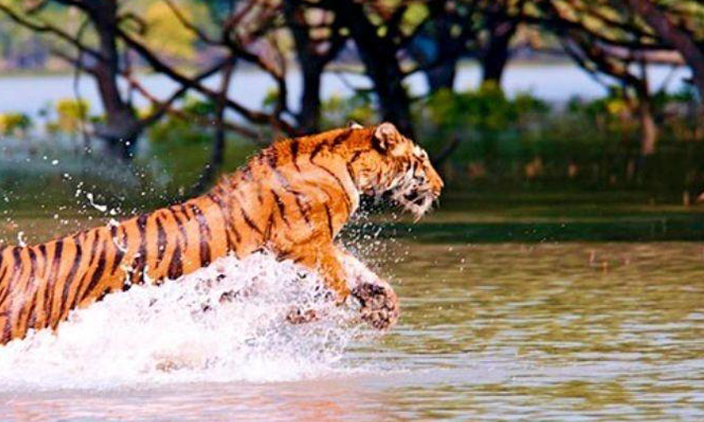
The mangroves serve as the structural backbone of the Sundarbans ecosystem, stabilizing the soil, reducing coastal erosion, and creating a buffer against storms and tidal surges. Their dense root systems trap sediments, filtering water and allowing the ecosystem to thrive even in murky, nutrient-rich waters. We can go into more detail on Mangrove Ecosystem of Sundarbans.
2. A Dynamic Tidal System
The Sundarbans ecosystem is shaped by its unique tidal dynamics. The region experiences two high tides and two low tides daily, which create a dynamic environment where the land is constantly changing. These tides bring nutrient-rich waters from the Bay of Bengal into the estuaries and creeks of the mangrove forest, sustaining the area’s rich biodiversity.
Read More:
During high tides, saline water floods the forest, making it a challenging environment for most terrestrial life. However, species here have adapted to this fluctuating environment. The regular inundation also nourishes the soil with nutrients, which supports the productivity of the mangroves and the aquatic life that depends on them. Let’s talk more about Mangrove Ecosystem of Sundarbans.
3. Biodiversity Hotspot
The Sundarbans is home to a stunning array of biodiversity, from the iconic Royal Bengal Tiger to numerous bird, reptile, fish, and invertebrate species. This complex food web is supported by the productivity of the mangrove ecosystem, which provides food and shelter for numerous species. The mangrove roots offer safe breeding grounds for aquatic species such as fish, shrimp, and crabs, which thrive in the nutrient-rich waters.
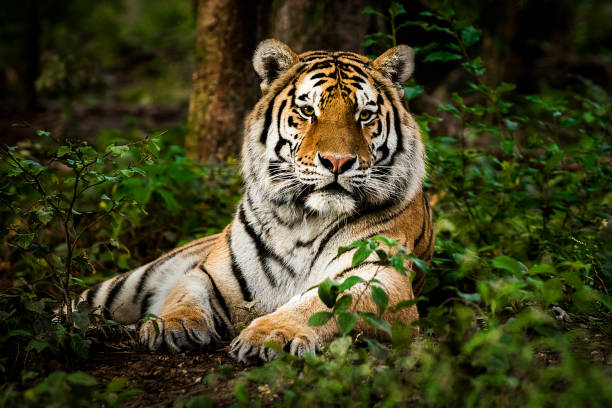
The invertebrate population of the Sundarbans, including crabs, prawns, and mollusks, forms the base of the food chain, supporting a wide range of predators. Several species of fish use the Sundarbans’ waterways as nurseries, migrating between freshwater and saline environments. These aquatic species, in turn, support the region’s many water birds, crocodiles, and mammals.
Among the reptiles, the Estuarine Crocodile is a prominent predator in the region’s waters, while the Monitor Lizard and various species of snakes contribute to the diversity of the region’s fauna. The mangrove ecosystem also supports numerous species of birds, including kingfishers, egrets, herons, and the endangered Lesser Adjutant Stork.
4. Trophic Relationships: The Circle of Life
The Sundarbans ecosystem thrives on complex trophic relationships. At the base of this web are detritivores and decomposers like bacteria and fungi, which break down leaf litter and organic matter. This nutrient recycling is essential for supporting higher trophic levels, such as herbivorous species and small fish.
Herbivores like the Spotted Deer (Chital) feed on the vegetation, while predators such as the Fishing Cat and Royal Bengal Tiger rely on these herbivores for sustenance. The interconnections between aquatic and terrestrial food chains are particularly important in the Sundarbans, where animals like the Fishing Cat have evolved to exploit both land and water ecosystems. We can elaborate further on Mangrove Ecosystem of Sundarbans.
5. Keystone Species: The Royal Bengal Tiger
While the Sundarbans is renowned for its tigers, the Royal Bengal Tiger is much more than just a symbol of the forest. As an apex predator, it plays a critical role in regulating the populations of herbivores, particularly spotted deer and wild boar. By controlling these populations, the tiger helps prevent overgrazing and supports the health of the mangrove vegetation.
The Royal Bengal Tiger also affects the behavior of prey species, creating a “landscape of fear” where prey animals alter their movement patterns to avoid being hunted. This behavior contributes to the overall functioning of the ecosystem, as it prevents any single species from becoming too dominant or causing ecological imbalance.
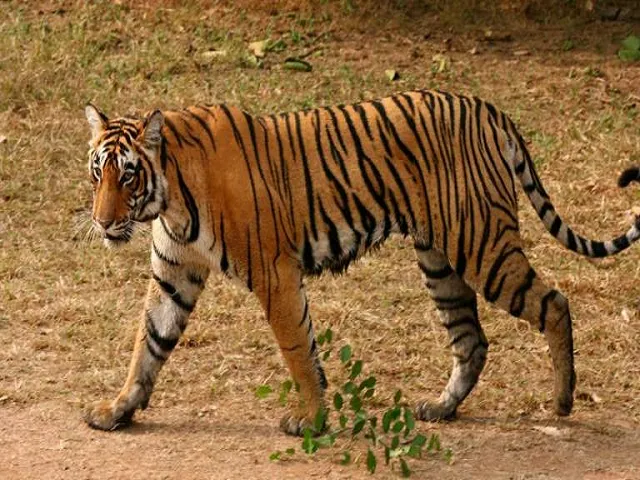
6. The Role of Mangroves in Climate Resilience
One of the most significant contributions of mangrove ecosystems, including the Sundarbans, is their ability to act as carbon sinks. Mangrove forests store large amounts of carbon in their biomass and root systems, playing a vital role in mitigating climate change. The Sundarbans, in particular, holds significant carbon reserves, thanks to its vast network of dense vegetation and submerged soils.
In addition to their role in carbon sequestration, mangroves also provide coastal protection. The dense root systems help reduce the impact of storm surges, acting as a natural barrier against cyclones and tidal waves, which are common in the Bay of Bengal. This protection is crucial for both the wildlife and the human communities living in and around the Sundarbans.

7. Threats to the Sundarbans Ecosystem
Despite its resilience, the Sundarbans faces a range of threats that jeopardize its long-term survival. Climate change is perhaps the most pressing challenge, as rising sea levels threaten to submerge large portions of the mangrove forest. Additionally, increased salinity from rising sea levels is affecting the growth and survival of certain plant species, including the Sundari tree, which is a keystone species in the ecosystem.
Deforestation, driven by agricultural expansion, urbanization, and illegal logging, is another major concern. The destruction of mangroves not only threatens the biodiversity of the region but also reduces its capacity to act as a buffer against natural disasters.
Human-wildlife conflict is also a significant issue, as increasing human activity in and around the Sundarbans puts pressure on the tiger population. Poaching, although illegal, continues to be a threat to the Royal Bengal Tiger and other species.

8. Conservation Efforts and the Way Forward
To protect the fragile ecosystem of the Sundarbans, concerted efforts from local governments, international organizations, and community stakeholders are essential. Various conservation programs are in place to protect the mangroves and their inhabitants. The designation of the Sundarbans as a UNESCO World Heritage Site has helped raise awareness and draw global attention to the need for its preservation.
Sustainable tourism and eco-tourism initiatives are also gaining momentum, encouraging responsible travel that minimizes the environmental impact and helps fund local conservation projects. Additionally, scientific research and community-based conservation initiatives are playing a vital role in preserving the unique biodiversity of the Sundarbans.

Conclusion
The Sundarbans’ mangrove ecosystem is a living example of nature’s complexity and resilience. From its specialized vegetation and dynamic tidal patterns to its intricate food web and role in climate mitigation, the Sundarbans is a world of its own. However, this delicate ecosystem is also highly vulnerable to human interference and climate change.
Understanding the importance of the mangroves and their inhabitants—especially keystone species like the Royal Bengal Tiger—is crucial for ensuring the long-term survival of the Sundarbans. Through continued conservation efforts, sustainable tourism, and global cooperation, there is hope that this remarkable ecosystem will endure for generations to come.









